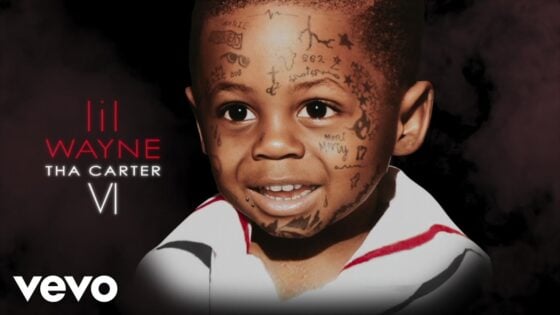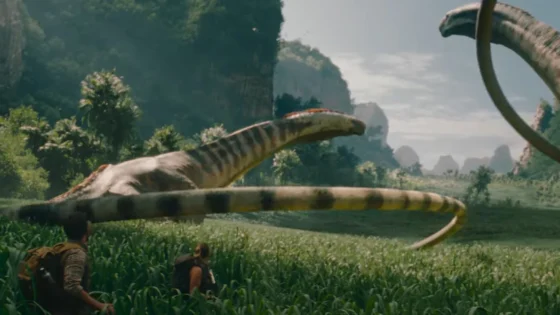Teenaged Suzu, kindhearted but clutzy and prone to spacing out, has just accepted a marriage proposal from a man she’s never met, and has moved in with him and his family in a portside town. Her adjustment to domestic life is rocky but not unpleasant, with only her new husband’s sister being anything less than kind and welcoming. Her relationship with her husband slowly developes, with small, awkward gestures of affection giving way to genuine caring and companionship. She takes it all in stride, and her misadventures and trials unfold with a charm and warmth, but there’s something sinister looming. A dark cloud that we’re never allowed to forget is slowly encroaching on the almost impossibly idyllic slice-of-life drama that is the first half of In This Corner of the World, because the year is 1944, and Suzu lives in Kure, a mere 15 miles from Hiroshima.
In This Corner of the World, adapted from the manga by Fumio Kono, makes the slow, almost imperceptible transition from the purest of slice-of-life tranquility into almost nail-biting suspense and tension. Little by little we’re reminded of what’s coming: we see Suzu attending classes in bomb safety, overhear snippets of news over the radio, hear warplanes droning overhead, all presented with the lightheartedness of a bedtime story. At one point, when Suzu points out a looming anvil cloud to her adorable niece, it almost becomes too much to bear. Subtitles periodically announce the date, and what started as a method of cluing us in on timeskips becomes a doomsday clock counting down to August 1945. This millimetre-at-a-time tonal shift is what keeps In This Corner of the World from being a pleasant, fluffy daydream or a terrifying nightmare, but something perfectly, almost agonizingly in between.
For much of the first half, viewers will probably find themselves reminded of episodic fancies like My Neighbors the Yamadas. Little episodes will play out seemingly without any grand consequence. Suzu will get lost in town and (unknowingly) make the acquaintance of a local brothel worker. She’ll master the art of wartime cooking, dazzling her new family with delicious meals cooked entirely from leftovers. The art style only aids in keeping things idyllic, with fairly simplistic character models whose oversized heads draw memories of Peanuts or For Better or Worse set against beautiful, painterly backgrounds. The soundtrack is all smooth violin strains and gentle piano movements; it’s Prozac in movie form, with only its highly episodic nature potentially keeping viewers at a distance, if they’re the type who demand narrative momentum.
And a tiny bit at a time, a new note joins in, a feeling of encroaching dread that intrudes on the effervescent joy of it all. November 1944, warships in the harbor — December 1944, air raid sirens and shelters — January 1945, rations are cut. That sweet, joyful first half becomes a memory, and you can’t quite remember when you started holding your shoulders so tightly. That brilliant, detailed animation goes from depicting rolling hills to burnt rubble. You start bracing yourself for things to get really bad, but a sucker punch brings you to your knees anyway. As far as films that play their audiences like a harp, In This Corner of the World is up there. That this is director Sunano Katabuchi’s fourth feature film just makes it more impressive.
The only thing standing between it and perfection is the ending, which overstays its welcome by 10 minutes or so, dragging the story past the logical conclusion point with an overlong denouement. It’s frustrating, because this relatively forgivable fault is really the sole thing holding In This Corner of the World back.
This is far from the first film to tackle the subject matter, and In This Corner of the World walks in the deep, revered footsteps of Grave of the Fireflies and Barefoot Gen. But Corner’s approach, mixing harrowing and deeply affecting war drama with slice-of-life sweetness, more than allows it to stand on its own among such company.
Shout! Factory Blu-Ray Specs
The North American release of In This Corner of the World is more than up to Shout! Factory’s usual standards, with the blu-ray release picking out every detail of the animation in perfect clarity.
The release comes with both the original Japanese audio and an English dub. As far as dubs go, the English version of the film is fine, but nothing to write home about.
One small but crucial welcome detail is the inclusion of two subtitle tracks: one for the English Dub version of the script, and one directly based off of the Japanese audio. This may seem inconsequential, but remember that English dubs are beholden to the lip movements of the characters, something that can hamper accurate translation. That Shout! Factory includes the original subtitles, unhampered by the constraints of dubbing, is sure to score brownie points with anime fans.
The DVD and Blu-Ray combo comes with a number of special features.
On the expected side of things are the interviews/Q&A sessions with the filmmakers, which is fairly standard as far as bonus features go. Also included are the usual trailers and a TV spot to round out the usual suspects. Far more interesting is a short featurette that details the areas in which the film takes place, including Hiroshima and Kure. The featurette provides a lot of background info on prominent sections of the cities, which were exhaustively researched for the film. Also included is footage of these areas today in order to showcase how they’ve changed — or stayed relatively the same, in some cases. It’s quite interesting to watch, even if the presentation could use some polish.
Finally, a small booklet includes a selection from the original manga, which may be superfluous for some fans, but others will surely find it fascinating to compare the animation and its source artwork, and the odds are good it will prompt someone to buy the full manga.
The Blu-Ray is available from Shout! Factory on their webpage and wherever movies are sold.

































